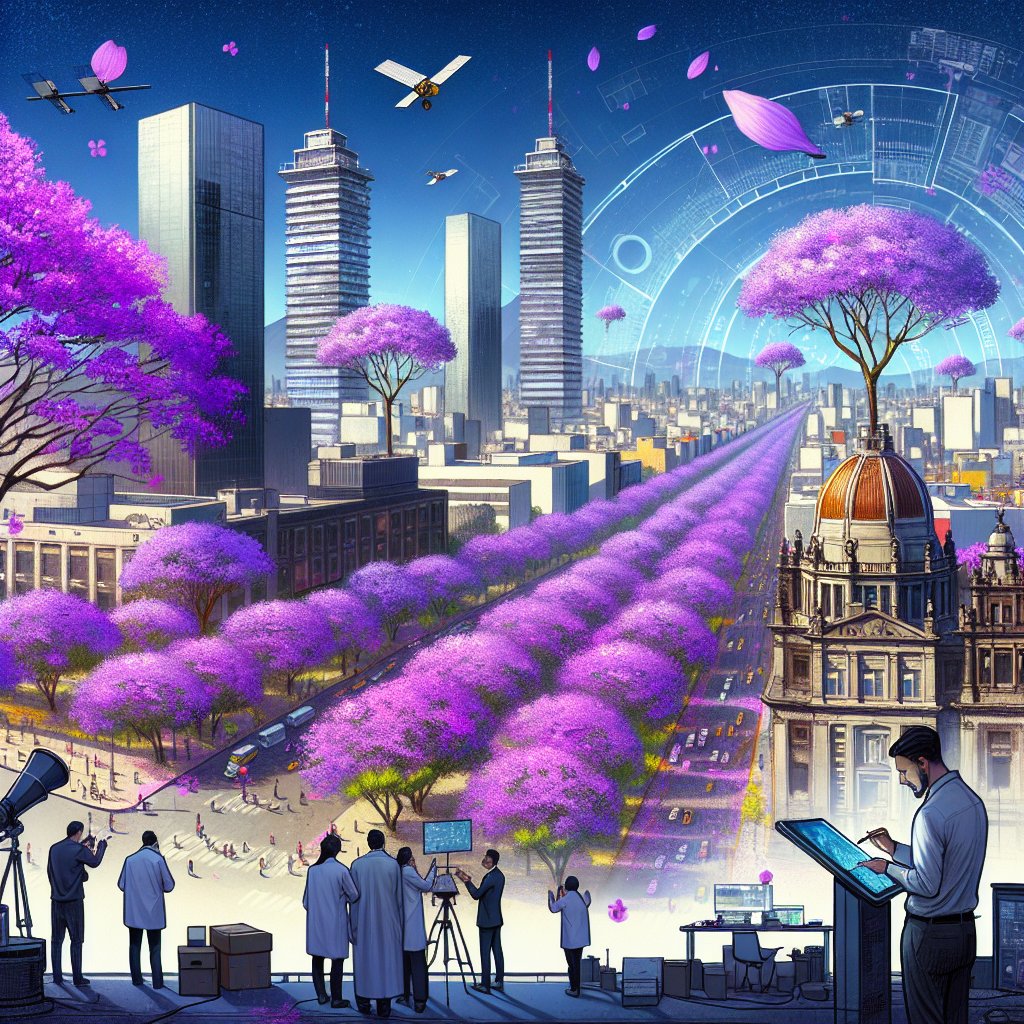Image created by AI
Mexico City's Jacaranda Trees Spark Climate Change Conversations with Unseasonal Blooming
Mexico City, renowned for its springtime transformation into a purple oasis thanks to the blooming of jacaranda trees, is experiencing an unexpected awakening of nature this year. The emblematic trees, which usually herald the arrival of spring, have commenced their colorful display as early as January, sounding climatic alarm bells across the metropolis.
Jacarandas, with their vibrant violet blossoms, have long been an integral part of the cityscape, drawing in not only admirers but also carrying ecological significance by supporting local wildlife. This year’s premature bloom has captured the attention of both inhabitants and researchers, instigating a dialogue on the visible impacts of climate change and the shifting patterns of nature within urban environments.
Constantino Gonzalez, a seasoned researcher affiliated with the Institute of Atmospheric Sciences and Climate Change Research at UNAM, states this flowering anomaly veers sharply from historical patterns, traditionally observed at the end of March. He and a team of young researchers are avidly gathering data and employing satellite technology to quantify the extent of this phenological shift and establish the link between the altered bloom calendar of jacaranda trees and the greater narrative of global warming.
The city's increasing temperature trends support the hypothesis that climate change has prompted the jacarandas to bloom well before their usual schedule. This shift is not only an aesthetic alteration but also sparks concerns regarding the interdependence between plant phenology and the urban ecosystem, which includes pollinators and birdlife accustomed to the trees' typical flowering schedule.
Mexico City’s fascination with flowering trees dates back to former Mexican President Pascual Ortiz Rubio’s tenure, where he envisioned replicating the cherry blossom aesthetic of Washington, DC. However, following the advice of Tatsugoro Matsumoto, a Japanese landscaper acquainted with the limitations of temperate-loving cherry trees, jacarandas were selected instead. Since then, they have been ingrained in the hearts of Mexico City’s nine million residents as a resilient and picturesque species that plays a crucial role in the city's environmental and cultural heritage.
The anomaly has ignited a wave of discussion on climate change among the public, particularly on social media where citizens express dismay and curiosity about the early blossoms. Cristina Ayala, a sustainability expert, highlights the heightened public awareness around urban manifestations of climate change. She underscores the importance of such awareness, as it indicates a shift from perceiving climate change as a distant threat to recognizing its immediate urban implications.
Residents like Alex Estrada emphasize the intrinsic value of the jacaranda's bloom as a symbol of cheer and vitality within the cityscape. Yet, the presence of blooming jacarandas amid the chill of winter raises questions and unease among the population. It's not only a matter of disrupted aesthetics; it concerns the fundamental changes occurring in the delicate ecological web.
As the city witnesses this early bloom, discussions on adaptation and mitigation are more pertinent than ever. The burgeoning awareness stirred by the jacarandas’ untimely flowering may well serve as a catalyst for broader environmental initiatives and a reinvigorated commitment to combating the adverse effects of climate change.










